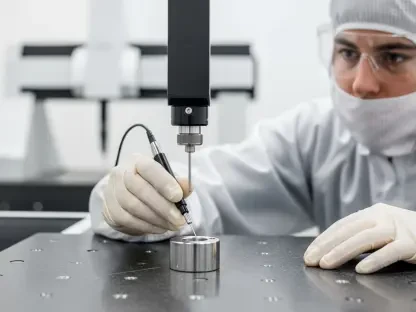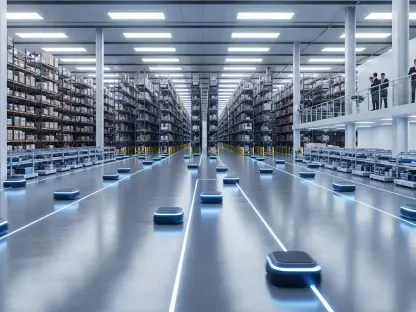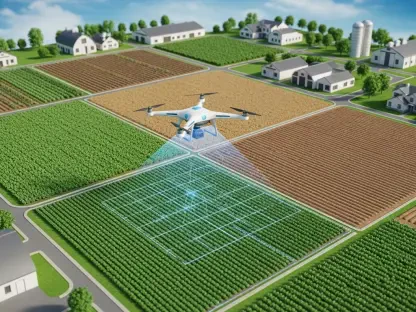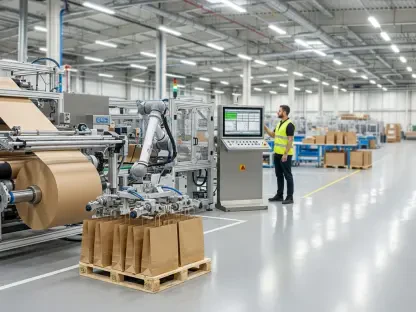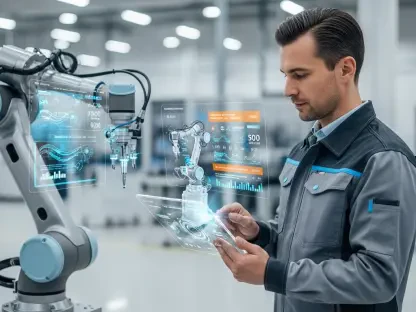The world of Cell and Gene Therapy (CGT) manufacturing has been revolutionized by significant advancements in environmental monitoring systems. These developments ensure product safety, maintain Good Manufacturing Practice (GMP) compliance, and meet increasingly stringent regulatory standards. eXmoor Pharma, a pioneer in this field, has successfully implemented cutting-edge technologies at its Cell and Gene Therapy Centre in Bristol, paving the way for a safer and more efficient manufacturing process.
Introduction of Rapid Microbiological Testing Methods
Biofluorescent Particle Counters
The introduction of biofluorescent particle counters has marked a seismic shift in how microbial contamination is detected. These tools offer real-time detection by leveraging biofluorescence to identify microbial particles in the air. This rapid approach is a game-changer for CGT manufacturers who face the constant challenge of ensuring product sterility within an extremely tight timeframe. Traditional methods, which could take days for results, are now being swiftly replaced by these instantaneous readings, allowing timely interventions and quality assurance.
Such proactive measures are particularly crucial for autologous products, where the time between manufacture and administration is exceedingly short. Rapid detection not only enhances product safety but also mitigates the risks associated with delayed contamination identification. For instance, biofluorescent particle counters can flag microbial contamination immediately, enabling manufacturers to take corrective actions before the product batch is jeopardized.
Impact on Autologous Products
Autologous therapies, where a patient’s own cells are used for treatment, are extremely time-sensitive. Any delay or uncertainty in sterility testing can compromise the entire therapeutic process. The advent of rapid microbiological methods bridges this gap by offering real-time insights, ensuring that every product batch dispatched for patient administration is free from contamination. This results in a higher confidence level among manufacturers and healthcare providers, fostering trust and reliability in CGT products.
Furthermore, these rapid methods align closely with regulatory expectations, providing a validated framework that satisfies both efficacy and safety criteria. As a result, adopting rapid microbiological testing is not merely a technological upgrade but a crucial step towards holistic product quality management in CGT manufacturing.
Technological Integration in Environmental Monitoring
Virtual Reality (VR) Modelling
Virtual Reality (VR) modeling is increasingly becoming a staple in environmental monitoring and facility design. This technology enables meticulous mapping of cleanrooms and equipment, offering a bird’s-eye view of manufacturing areas. By visualizing workflows and proximity to critical zones, VR modeling aids in the early development and fine-tuning of risk-based environmental monitoring programs.
For eXmoor Pharma, VR modeling has been instrumental in designing their Cell and Gene Therapy Centre. Accurate mapping facilitates strategic placement of monitoring sensors, thereby optimizing environmental controls. This proactive approach significantly reduces contamination risks and ensures that all critical parameters are monitored consistently.
Operational Area Mapping
Accurate operational area mapping through VR technology provides an unprecedented level of detail and foresight. It helps identify potential contamination hotspots and allows for pre-emptive measures to be put in place. For instance, VR models can simulate various manufacturing scenarios, identifying areas where particle generation is likely to be highest. This enables targeted monitoring and the deployment of additional protective measures, bolstering overall environmental control.
Moreover, VR modeling assists in training staff by offering virtual walkthroughs and interactive sessions. Personnel can get accustomed to the facility layout and procedures in a simulated environment, ensuring they are well-prepared for real-world operations. This results in smoother operations and reduced risk of human error, contributing to higher levels of GMP compliance.
The Rise of IoT Technology
Data Integration and Real-Time Analysis
The Internet of Things (IoT) has revolutionized data integration in CGT manufacturing. IoT enables seamless connectivity between sensors, devices, and systems, facilitating real-time data collection and analysis. For environmental monitoring, this means enhanced operational efficiency and a robust safety framework.
Real-time data from cleanroom sensors can be collected, analyzed, and acted upon without delay. This constant flow of information helps identify trends, anomalies, and potential issues long before they escalate. By integrating IoT, eXmoor Pharma can ensure a dynamic response to environmental changes, maintaining optimal conditions for cell and gene therapy manufacturing.
Enhanced Operational Efficiency
IoT technology not only collects data but also aids in its comprehensive analysis. Automated systems can rapidly process information from multiple sensors, identifying deviations that may indicate contamination or other issues. This proactive approach enhances operational efficiency by enabling quick, informed decision-making and reducing downtime due to contamination events.
Furthermore, the data collected through IoT networks can be used to refine processes continuously. By analyzing long-term trends and performance indicators, manufacturers can implement improvements that enhance product quality and compliance. This approach underscores a shift towards data-driven decision-making in CGT manufacturing, reflecting a broader industry trend towards digital transformation.
Wireless Monitoring Systems
Cloud-Based Solutions
Moving towards wireless monitoring systems marks a significant leap in facility management and environmental control. Cloud-based solutions enable flexible probe placement and seamless data collection, catering to the dynamic needs of a growing CGT manufacturing facility. By utilizing cloud storage, eXmoor Pharma can easily expand their monitoring capabilities without being constrained by physical limitations, ensuring the system remains robust and adaptable to new regulatory requirements and manufacturing needs.
Additionally, cloud-based solutions provide a platform for advanced data analytics, enabling the integration of machine learning and artificial intelligence to predict and prevent potential contamination events. This modernization enhances facility oversight and fosters a more resilient and adaptive operational environment. Flexibility in probe placement and the ability to scale monitoring efforts as the facility grows are crucial advantages, offering eXmoor a means to stay ahead of potential compliance and operational challenges.
Overall, these technological advancements in environmental monitoring systems fortify the entire CGT manufacturing process. Real-time detection of microbial contamination, precision in cleanroom design through VR modeling, comprehensive data integration via IoT, and the adaptability of cloud-based wireless systems collectively drive advancement in the industry. eXmoor Pharma’s pioneering efforts not only exemplify the benefits of these technologies but also set a precedent for future developments in environmental monitoring in CGT manufacturing.
Flexible Probe Placement
A key advantage of wireless monitoring systems lies in the flexibility of probe placement. Unlike traditional setups, which often require extensive wiring and infrastructure changes, wireless probes can be repositioned effortlessly to accommodate new equipment or altered cleanroom layouts. This flexibility ensures that monitoring remains comprehensive and consistent, even as manufacturing processes evolve.
For eXmoor Pharma, the ability to move and add probes without disrupting cleanroom operations or compromising sterility has been a game-changer. They can easily adapt their monitoring setup to meet the specific requirements of different CGT processes, ensuring that all critical parameters are continuously monitored. This adaptability is especially beneficial in a fast-paced and constantly evolving field like CGT manufacturing, where the introduction of new therapies and techniques is commonplace. Flexible probe placement also contributes to the scalability of the monitoring system, allowing it to grow in tandem with the facility.
Conclusion
The industry of Cell and Gene Therapy (CGT) manufacturing has seen a transformative shift due to major advancements in environmental monitoring systems. These technological improvements have become essential for ensuring product safety, maintaining Good Manufacturing Practice (GMP) compliance, and meeting rigorous regulatory standards. eXmoor Pharma, a leader in this arena, has successfully integrated these cutting-edge technologies at its Cell and Gene Therapy Centre in Bristol. This innovative approach not only enhances the safety of manufacturing processes but also boosts efficiency.
By utilizing these advanced monitoring systems, eXmoor Pharma has set new standards in CGT manufacturing. Their pioneering work ensures that the production environment is meticulously controlled, reducing the risk of contamination and thereby ensuring the safety of the therapy products. This meticulous attention to detail in monitoring systems aligns with GMP requirements and meets the stringent guidelines set forth by regulatory authorities.
Furthermore, eXmoor Pharma’s initiative in adopting these technologies underscores their commitment to excellence in the CGT sector. By doing so, they contribute to the broader goal of making advanced therapies more reliable and accessible. The shift to these sophisticated systems represents a significant leap forward in the field, promoting both higher safety standards and operational efficiency. Thus, eXmoor Pharma stands at the forefront of innovation, setting a benchmark for others in the industry to follow.


